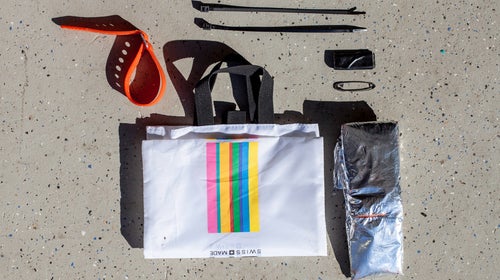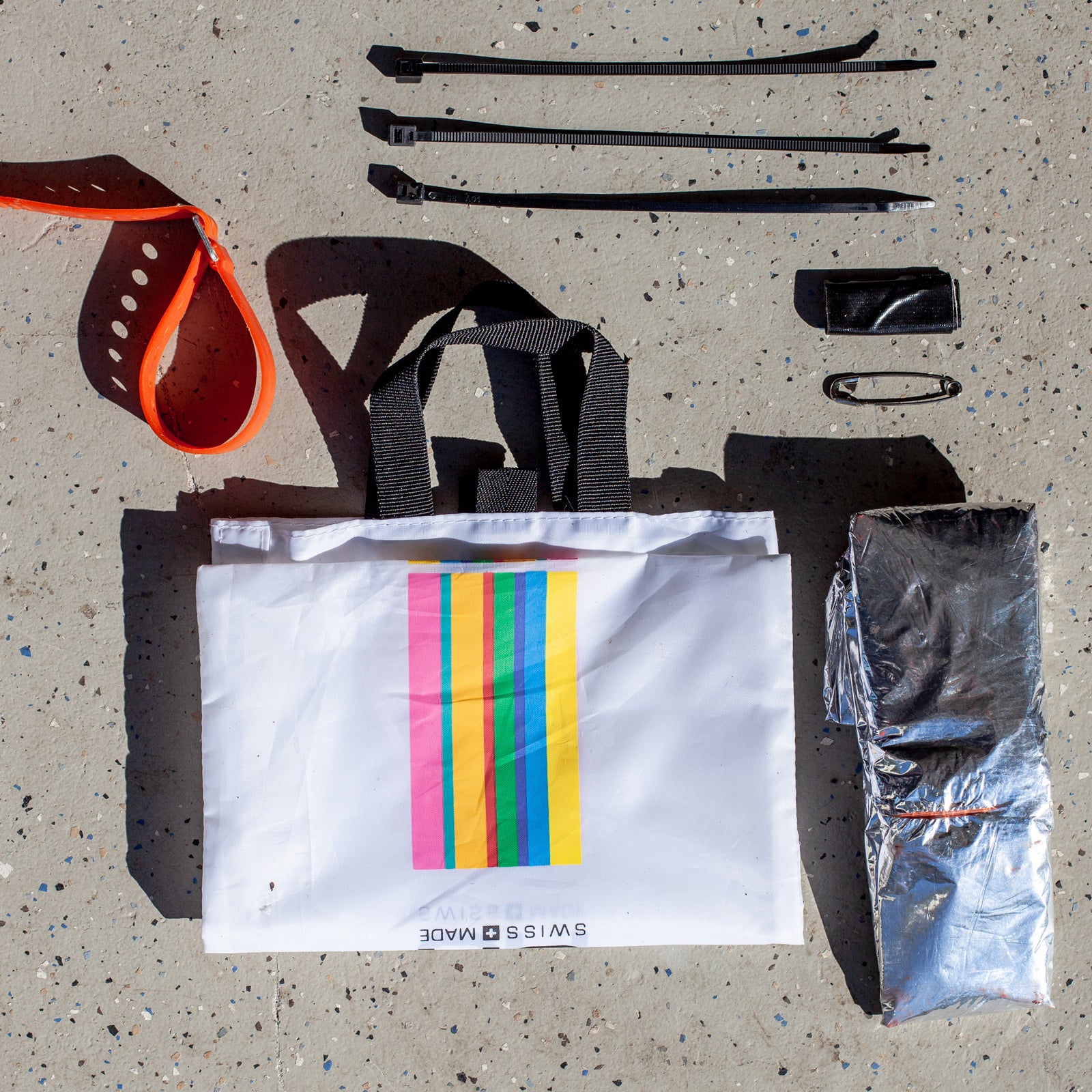The solitude of a quiet skin with your buddies and the enjoyment of a powder stash is tempered by only one fact: if you hurt yourself, or if your gear fails, you don’t have ski patrol to bail you out. While avalanche training, first aid, and backcountry navigation skills��should be a minimum for anyone who backcountry skis, knowing how to repair your gear and having the tools to do so are also extremely important.
I spoke with adventure skier Brody Leven, who’s been a professional backcountry athlete for ten��years, about what he puts in his repair kit. While each kit will be different based on the individual skier, we mixed practical tips with examples of what Leven uses to help you build the right repair bundle for yourself.
Keep It Simple
In his decade of professional skiing in the backcountry, Leven has yet to experience��any of the catastrophic gear malfunctions that many people build a kit around. “Can they happen to me? Sure, but I am willing to deal with the consequences when they do,” he says. “Those consequences where I ski every day around Salt Lake City��are just going to be less. When I go to a different mountain range or��on a big trip, I change accordingly.”
Assess Potential Problems
“I think about what could break,” Leven says. “You have to consider your own level of ingenuity. How creative can you get? How well can you MacGyver something? Maybe you are someone who looks at a broken ski pole, a stick, and three ski straps and can’t figure out what to do.”
Start with Good Base Gear
Leven spends more energy making sure he has the right gear than thinking about ways to fix it in the field. “I focus more on reliable gear and keeping close tabs on it throughout the season,” he says.
Keep an Eye on Deterioration
“We use reliable gear day in and day out, which means we put a lot of stress on it, and we watch as our boots deteriorate, as our skins start to fail,” says Leven. You’ll save yourself a lot of grief by noticing problems that could occur in the backcountry before they happen and addressing them.
Kits
Leven uses one kit for day tours around his home in Utah and another for trips farther afield. Both are outlined below.
Close-to-Home Kit
Ski Straps��
Like many skiers, Leven believes that rubberized ski straps (often called Voile straps) are one of the best multi-use pieces of gear around. One of their key utilities is for repair. “Three or four ski straps can get you through pretty much anything,” says Leven.��
Myriad hard-good failures can be solved by those hardy, inexpensive��rubber and metal-clasp straps.��“Boots are the first thing to break. Ski straps can fix almost anything that could possibly happen to a boot,” says Leven. The same goes for a pole. “Broken ski poles can be fixed with a couple of ski straps and a stick,” Leven says. They are also strong enough to help affix failing skins to your skis, he says.
A Safety Pin
A safety pin can keep a hole in a pack closed, help you tinker with the tiniest problems in your kit, and is a simple fix for a broken zipper pull. You can usually find them for free (or nearly), and the weight penalty is next to nothing.
Tape
Leven suggests not overthinking the tape you bring to repair your gear. “I just use whatever shiny two-inch tape I have around my house,” he says. He also warns against wrapping your tape around your ski pole, a common practice in the backcountry-ski community. “That is noticeably heavier on the ski pole, and your swing weight is compromised. You’ll realize that having duct tape on your pole actually sucks—especially if it’s just on one pole. I did that for eight years and never used any of it. It’s just not worth it.” Now��he wraps duct tape around a pencil or a straw and puts it in his first aid kit.
Zip Ties
Like a safety pin, zip ties can cure all kinds of problems with torn gear. And their weight and price penalty is negligible.
A Cinch-Top Bag
Leven keeps his pared-down repair kit in a simple bag that also houses his first aid kit and lives in his backcountry ski pack.
Travel Kit
A Multitool
Leven uses the ��($80). “It was the lightest multitool when I got it ten��years ago, but it is still super heavy,” he says. “It’s got a knife, pliers, driver, and I bring all of the right bits with it.” He suggests taking a close look at the compatibility of your multitool with the parts of your gear before using it in the backcountry. “Look at all the screws on the bindings and your boots, and get a multitool that fits most of them. The really lightweight bindings are built to have only one size screw in them, so you only need one bit.”��
An Extra Needle and Thread
Leven buys a simple sewing kit, like the kind you get from a hotel.“I have sewn up a pair of gloves where the fingers blew out because I was using them at camp and handling the stove,” he says.��
Multiple Safety Pins
Leven packs��multiple safety pins for the same reason he brings one in his smaller kit.��He packs more of them, and the extras live at base camp.
Paracord
On top of potentially acting as a giant suture for the busted body of a backpack, paracord also has tons of uses in camp, like a dry line. “I will always carry a couple feet of really thin p-cord,” says Leven.
Zip Ties
Leven keeps��six zip ties in his travel kit: two short, two medium, and two long.��
Patches
“I carry seam sealer and Tear-Aid or Gear Aid patches to fix holes in jackets,” says Leven. He combines the seam seal with the patches��and puts both inside and outside a tent or jacket to repair tears.��
Extras
When traveling, Leven often brings extra pieces of gear that might break, like a pole, toe and heel pieces for his bindings, and a powder basket.


